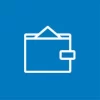A personal check, also known as a correspondence check, is a check written by a drawer (a bank customer) instructing a drawee (their bank) to deliver a specified amount of money from their bank account to a payee (the check’s recipient) upon presentation of the check.
Unlike bank checks, personal checks do not have a face value. The drawer can specify the amount of money to be drawn from their account at the time that they fill out the check.
The transaction only occurs when the payee cashes or deposits the check. In order for the transaction to be made, there must be sufficient money in the drawer’s account to cover the draft at the time that the cash is checked or deposited. is not withheld by a bank, and therefore is not guaranteed. Instead, the money is deducted from the check writer’s account when the payee cashes the check.
Personal checks provide a lot of flexibility because you can decide who you want to allow to draw on your bank account and the amount which you want them to be able to draw at the time that you fill them out. As long as you are sure that the amount of money you state on a check will be available in your account at the time when the recipient deposits or cashes the check, personal checks can work very well as a payment method and as a means of transferring claims to bank account balances.
However, because a payee will only be able to cash or deposit a personal check if there is money in the drawer’s bank account, personal checks require trust between the payee and the drawer. This sets them apart from bank checks, which are drawn on the drawee (a bank), meaning the payee only has to have trust in the bank’s ability to pay, rather than in an individual.
In many countries, personal checks are provided to customers by their banks for little or no charge. Swiss banks charge customers between 5 and 20 Swiss francs (depending on the bank) for each personal check issued. The reason for these high fees is that checks have never been widely used in Switzerland.
More on this topic:
Guide to using checks in Switzerland


